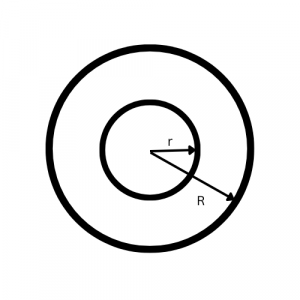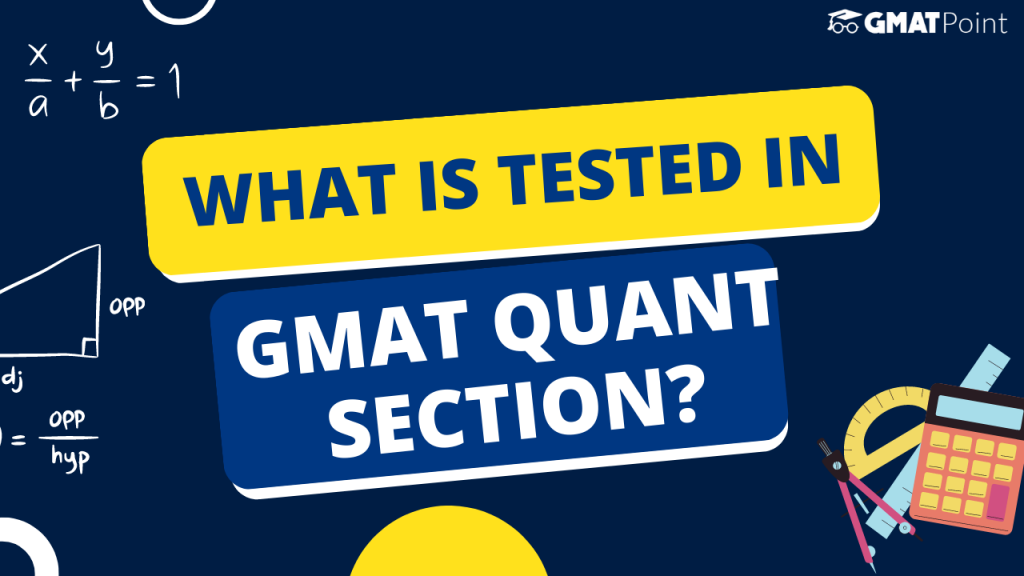What is tested in the GMAT Quant section? How To Prepare For GMAT Quant Section?
The GMAT Quantitative Reasoning section evaluates your math skills and is often considered a challenging part of the exam for many test-takers. In this section, you are expected to solve tricky quants questions in a time-bound environment. The GMAT Quantitative Reasoning section consists of two types of questions:
1) Problem-Solving
2) Data Sufficiency.
The quantitative reasoning section contains 31 questions; you will have 62 minutes to complete them. That would give you roughly 2 minutes per question. The questions cover various math topics, including arithmetic, algebra, geometry, number system, and probability.
Take Free GMAT 2023 Daily Targets
Subscribe To GMAT Preparation Channel
1) Problem-Solving Questions
Problem-Solving questions are traditional multiple-choice questions that test your ability to solve math problems. These questions require you to use your math skills to solve a problem and choose the answer from five options. Some topics covered in Problem-Solving questions include percentages, ratios, probability, and algebraic expressions.
2) Data Sufficiency Questions
Data Sufficiency questions are unique to the GMAT and require you to determine whether the information given in two statements is sufficient to answer a question. There are only two answer choices for Data Sufficiency questions:
A) Statement (1) alone is sufficient, but statement (2) alone is not sufficient.
B) Statement (2) alone is sufficient, but statement (1) alone is not sufficient.
C) Both statements together are sufficient, but neither statement alone is sufficient.
D) Each statement alone is sufficient.
E) Statements (1) and (2) together are not sufficient.
Data Sufficiency questions are designed to test your ability to analyse and interpret information and determine whether it is sufficient to answer a question. Some of the topics covered in Data Sufficiency questions include geometry, number properties, and algebra.
GMAT Quants Syllabus
| Arithmetic | Algebra | Geometry |
| Probability | Permutation and combination | Coordinate geometry |
| Ratio and proportion | Algebraic expressions and equations | Circles |
| Simple and Compounded Interest | Arithmetic and geometric progressions | Quadrilaterals |
| Speed, time, distance | Statistics and Probability | Triangle |
| Percentage, Average and Fractions | Exponents | Lines and angles |
| Number Properties | Functions |
From looking at the table, it is readily apparent that arithmetic is one of the essential parts of this section. If you are preparing with more than three months in hand, dedicate your first month to learning and improving your arithmetic concepts.
The other important topics are algebra, followed by geometry and probability. These topics require extensive conceptual understanding. If it has been a long time since you last studied mathematics, you might find it difficult to solve questions from these topics without having spent adequate time learning (or relearning) these concepts. Hence it is recommended that you give at least one and a half to two months to develop your skills in these two topics as well.
The format of questions is two-fold. We will look at examples of both of these types. The examples have been taken from GMATPoint Daily Targets. Daily Target is an excellent tool for students preparing for GMAT, where you will get five questions on verbal and quants daily, for free, along with video solutions. Hence, it is an indispensable tool for any serious GMAT aspirant.
Problem-Solving Example Question
Problem-Solving questions are traditional multiple-choice questions that test your ability to solve math problems. These questions require you to use your math skills to solve a problem and choose the answer from five options. Some topics covered in Problem-Solving questions include percentages, ratios, probability, and algebraic expressions.
Let us look at an example:
Q)A park in the form of a circle has a circumference of 352 units. The park is being expanded so that the final park is also circular in shape and has a radius of 14 units more than the initial radius. Then what is the new area added to the park?
A)5454 sq units
B)4455 sq units
C)4554 sq units
D)5544 sq units
E)5445 sq units
A: Let the initial radius be r and final radius be R

Circumference = 2πr
2πr=352
2×22⁄7×r=352
r= 56 units
R = 56+14 = 70 units
Area added = π()=π(702−562)=227×126×14π(-)=π(702−562)=722×126×14 = 5544 units sq
Hence D is correct
Data Sufficiency Questions
Data Sufficiency questions require you to determine whether the information given in two statements is sufficient to answer a question. There are only two answer choices for Data Sufficiency questions:
A) Statement (1) alone is sufficient, but statement (2) alone is not sufficient.
B) Statement (2) alone is sufficient, but statement (1) alone is not sufficient.
C) Both statements together are sufficient, but neither statement alone is sufficient.
D) Each statement alone is sufficient.
E) Statements (1) and (2) together are not sufficient.
Data Sufficiency questions are designed to test your ability to analyse and interpret information and determine whether it is sufficient to answer a question. Some of the topics covered in Data Sufficiency questions include geometry, number properties, and algebra.
If a and b are integers, is a – b an even number?
Statement 1: a+5b is even.
Statement 2: is even.
- A) Statement (1) alone is sufficient, but statement (2) alone is not sufficient.
- B) Statement (2) alone is sufficient, but statement (1) alone is not sufficient.
- C) Both statements together are sufficient, but neither statement alone is sufficient.
- D) Each statement alone is sufficient.
- E) Statements (1) and (2) together are not sufficient.
Key Steps to Start Preparing for GMAT Quants
- Review math fundamentals: The GMAT Quantitative Reasoning section covers various math topics you learned during high school, so it’s important to review the basics. Make sure you are well-versed in arithmetic, algebra, geometry, number properties and probability.
- Take practice tests: The best way to prepare for the GMAT Quantitative Reasoning section is to take more practice tests. GMATPoint Daily Targets are an excellent free resource to practice GMAT level problems of both quants and verbal daily. You will be given a set of questions for both sections and must solve them within the given time. After you are done, you will receive video solutions, and you can also check the leaderboard to gauge your preparation level.
- Identify areas of weakness: Use practice tests to identify areas where you need improvement.
- Focus your study efforts on these areas you need improvement in and use additional resources, such as GMAT Official Guide, to help you master them. You must consider buying the Official Guide during your GMAT preparation.
- Develop a strategy: Develop a strategy for approaching each type of question. For example, for Data Sufficiency questions, it’s imperative to analyse both statements and determine whether they are sufficient to answer the question.
- Practice time management: Time management is critical in the GMAT. There is a penalty for not completing the section. Make sure you practice answering questions quickly and efficiently to ensure that you have enough time to complete all the questions.
Preparing for the Quantitative Reasoning section requires practice, a review of math fundamentals, and a strategy for approaching each type of question. With dedication and effort, you can master the GMAT. Quantitative Reasoning section and achieve your target score. Good luck!
Do check out our article on Number Properties and practice the questions to kickstart your quants preparation.
Write to us at support@gmatpoint.com if you have any queries.
Also Read:
- What Is GMAT? – Everything to know about the test
- How To Prepare For GMAT In 1 Month?
- What Is Tested In GMAT Verbal? How To Improve Verbal In GMAT?
- Introduction To GMAT Verbal Reasoning (With Solved Examples)
- How To Improve In GMAT Sentence Correction: Tips, Tricks, and Strategies
- 6 Interesting Facts About The GMAT Exam You Should Know
- GMAT preparation for beginners: What to Study and How
- 6 Best Practices for GMAT Preparation: The Ultimate Study Guide
- How To Study For GMAT With Full-time Job?
- Can You Study for GMAT On Your Own? A Step-by-step Approach
- Is GMAT Easy To Crack? What Makes GMAT Challenging
- How to start your GMAT preparation | 5 Tips To Crack GMAT
- Top colleges accepting GMAT scores in India
If you are starting your GMAT preparation from scratch, you should definitely check out the GMATPOINT
